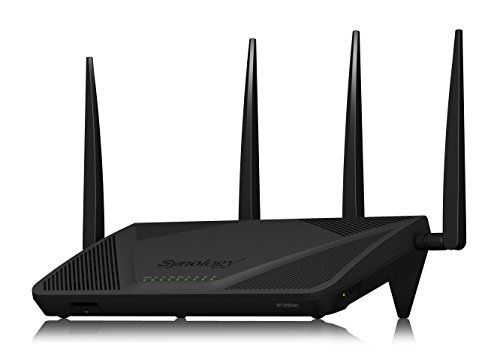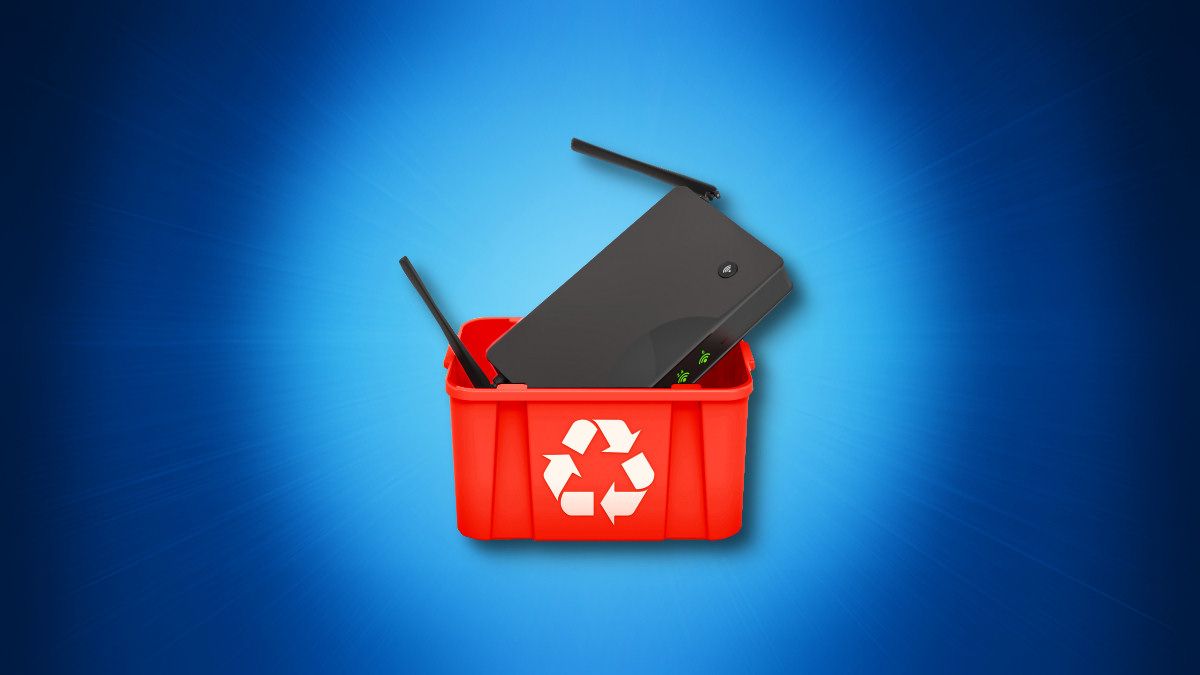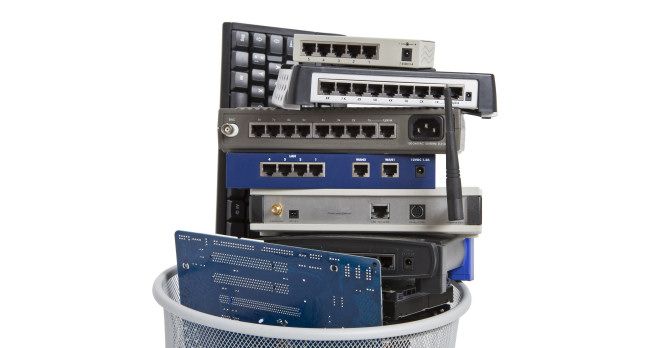Quick Links
Time marches on, and router technology does too. Due to obsolete Wi-Fi security standards and unpatched vulnerabilities, it's time to recycle your old router and get a new one. Along the way, you'll likely get a speed boost. Here's why.
Improved Wi-Fi Security Standards
Wi-Fi security standards keep your network safe, requiring a password to connect to your router, and also encrypting your wireless data so others can't intercept and read it.
Since 1997, Wi-Fi encryption standards have improved over time as older methods fell to hacks. First to go was WEP, then WPA, and even WPA2. All of those older security standards are now considered insecure, and if you use them, you're vulnerable to people nearby using your network without permission or spying on your internet activity.
Today, WPA3 (introduced in 2018) is the best Wi-Fi encryption standard to protect you against Wi-Fi eavesdropping or intrusion. If your current router doesn't support WPA3, it's definitely time to upgrade.
Many older Wi-Fi devices don't support WPA3. In order to take full advantage of the new security standard, you'll need to upgrade or replace them as well. Otherwise, you can often use a transitional WPA2/WPA3 mode in your router that supports both legacy devices and new devices that work with WPA3.
To figure out if your router supports WPA3, you'll need to log in to your router's configuration interface (consult your documentation for instructions,) and take a look at your wireless security settings. If WPA3-Personal isn't available, your router needs an upgrade.
Unpatched Vulnerabilities
Aside from well-known hacks to security standards such as WPA2, individual router models can have bugs that make them vulnerable to hacking---locally through Wi-Fi, or through the internet. Typically, if a router device is new enough, the manufacturer will issue software updates (called "firmware updates") to patch these issues and keep your router relatively secure. But if a device is old enough, it might not be receiving firmware updates like it once was. If so, you're much more vulnerable to hacks.
For example, in 2021, researchers discovered a vulnerability in the Wi-Fi standard they dubbed "FragAttack." It affects almost every Wi-Fi router released since 1997. Many router manufacturers have since released patched firmware to fix this issue. But if you're running an older router without that patch available, it could potentially be compromised with the FragAttack hack. If not FragAttack, it might fall to another vulnerability yet to be discovered.
To make sure you're protected, log into your router's configuration interface and check for firmware updates---or you can look on the manufacturer's website. If there isn't a firmware update dated 2021 or later, it's time to get a new router.
New Speed Standards
If your router is old enough, it might not take advantage of the fastest Wi-Fi speeds your newer Wi-Fi devices (tablets, smartphones, laptops) can support. Wi-Fi 6 (2019) and Wi-Fi 6E (2021) introduced much faster Wi-Fi transfer speeds, and Wi-Fi 7 is on the horizon.
If you'd like the best Wi-Fi performance possible and your router was manufactured before 2019, you'll very likely benefit from faster Wi-Fi speeds if you upgrade to a newer router today.
Also, if your router is old enough, it might not even have Gigabit Ethernet jacks, which allow much faster wired Ethernet connections than the old 100BASE-T standard. Upgrading to a modern router will give you that benefit as well.
Better Configuration Tools and Parental Controls
Compared to the configuration interfaces that shipped in older routers, newer routers tend to have easier-to-use interfaces with more features. More features can sometimes add confusion, but one router feature every parent might appreciate is parental controls, which was generally lacking from routers until recently. We've found that Synology routers have excellent parental controls that make it easy for parents to block certain sites or put time limits on internet usage by device.

Synology RT2600ac – 4x4 dual-band Gigabit Wi-Fi router, MU-MIMO, powerful parental controls, Threat Prevention, bandwidth management, VPN, expandable coverage with mesh Wi-Fi
A great router with excellent parental controls.
Also, many modern routers (including those by Synology) allow you to configure them using an app on your smartphone instead of requiring a web interface. This can make changing settings quickly a lot more convenient.
Which Router Should I Get?
As of February 2022, if your current router supports WPA3 encryption and has received a firmware update since 2021, it's recent enough that you should keep it. Anything older (generally speaking, made before 2018) is vulnerable to hacking.
When it comes to buying a new router, it can be hard to choose from all the options. We've written a guide to the best routers that includes router recommendations for different budgets and needs. And as we mentioned above, we've found that Synology routers have excellent parental controls.
Remember to Recycle Your Old Router
It's worth noting that when we say "throw away," we really mean "recycle." E-waste is a huge problem, and it's important to find a local business or disposal center that will accept used electronics for recycling.
Be sure to reset your router first to remove your personal data, too.
We recognize that it's noble to get as much life out of an older piece of equipment as you can. But when it comes to vulnerable hardware that might compromise your security or finances, you don't want to mess around: It's time for an upgrade. Stay safe out there!


